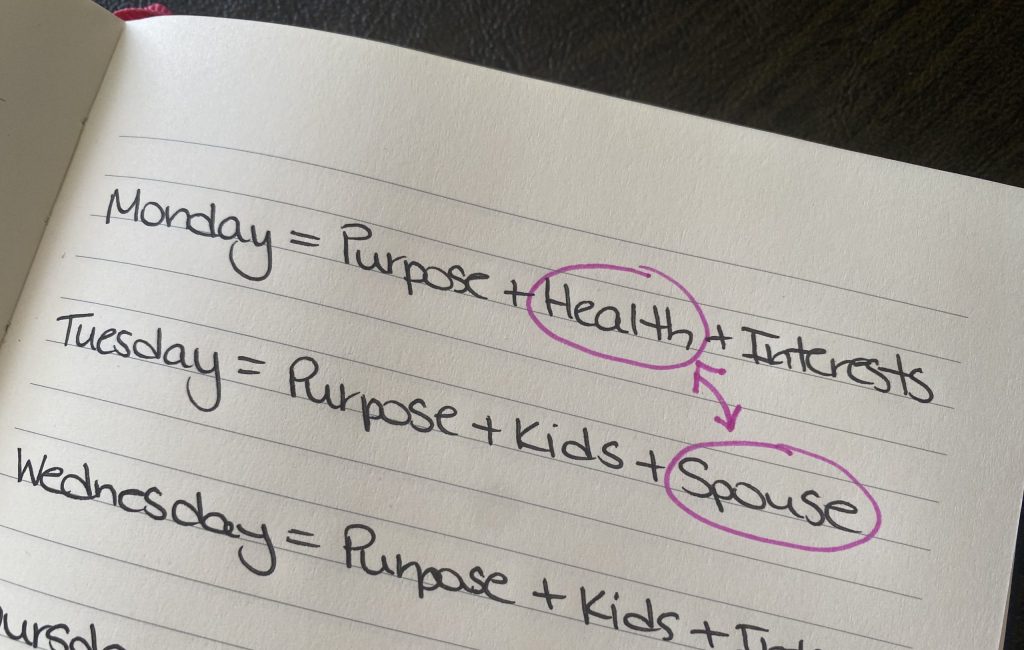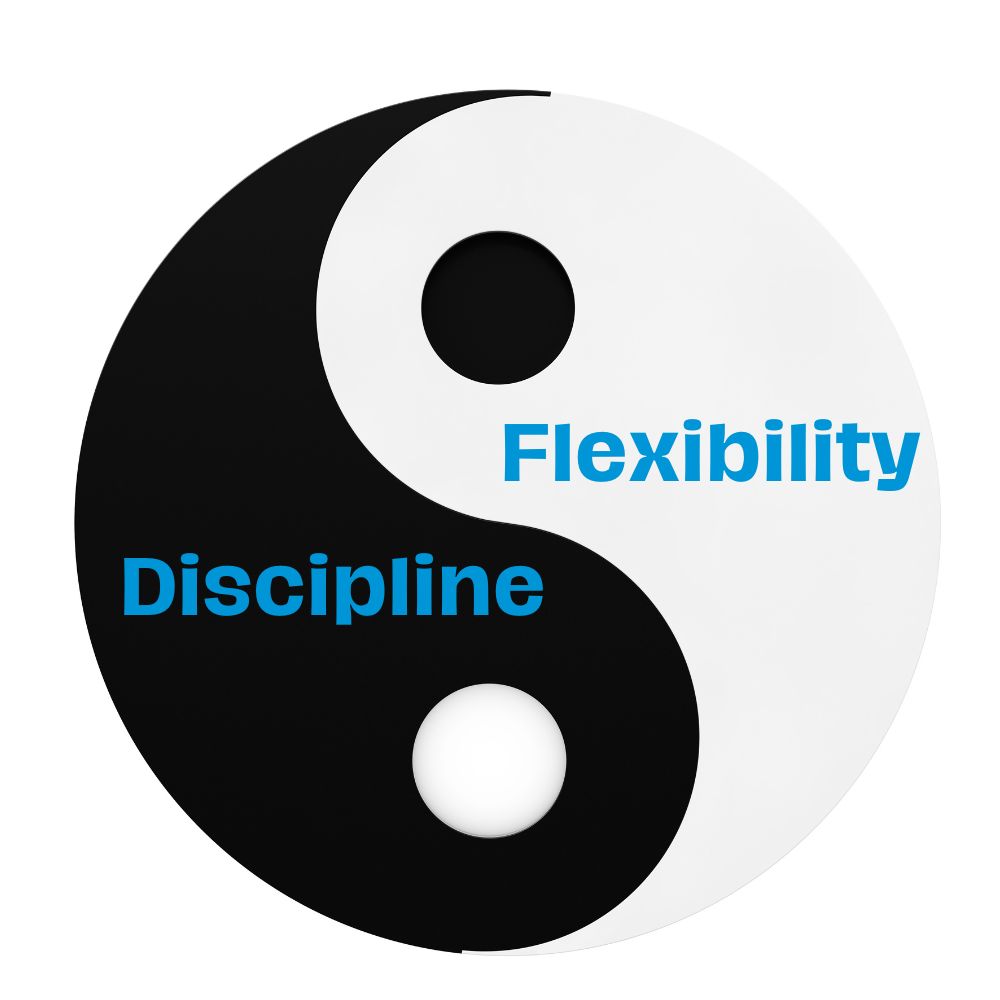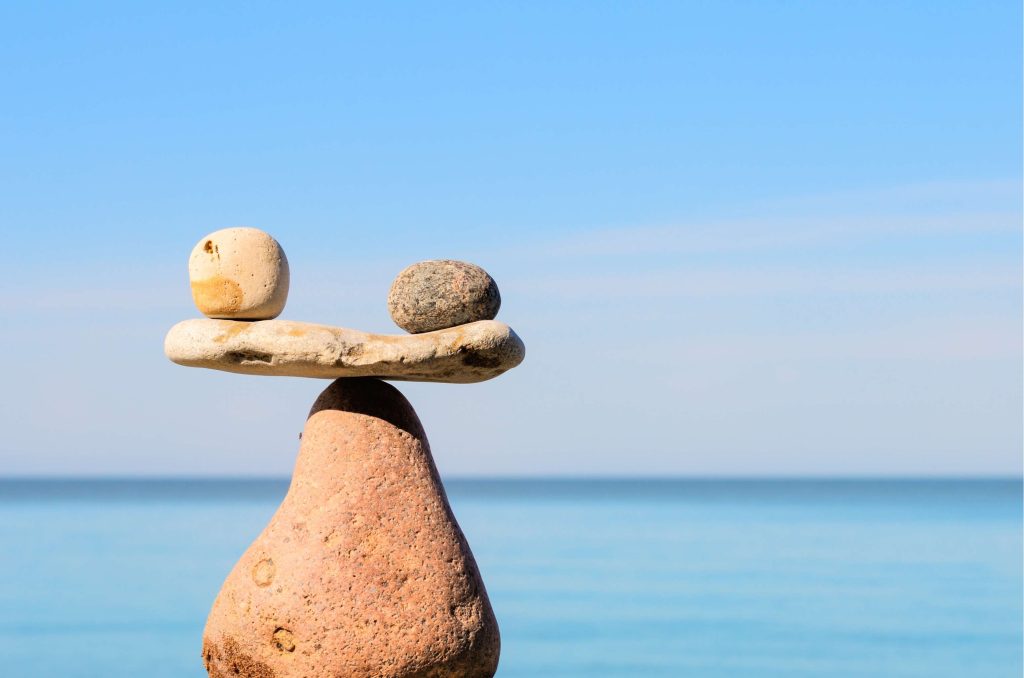
In a famous study conducted in the late 1920s by Paediatrician Clara Davis, newly-weaned infants aged 6-11 months were given the opportunity to choose what, when and how much they wanted to eat. They had access to 34 items including foods like apples, carrots, wheat, beef, and fish; as well as things like water, salt, milk and bone marrow. Given the young age of the study participants, nurses were trained to sit quietly by holding spoons and to only administer the food if the child made motions to request it. The children had no preconceived biases with these foods. There were no prescribed eating times and food was always available.

The results showed that each of the infants created their own unique eating patterns. As Davis wrote, “Every diet differed from every other diet, (…) and not one diet was the predominantly cereal and milk diet with smaller supplements of fruit, eggs and meat, that is commonly thought proper for this age.” This is similar to how each of us has our own unique equation! There is not one common, prescribed path to fulfillment.
Another key finding was that the children’s tastes changed unpredictably and they often chose strange combinations of foods – a “dietician’s nightmare” as Clara called it. For example, a breakfast of a pint of orange juice and liver; a supper of several eggs, bananas and milk. They didn’t tend to choose a “balanced diet” during a given meal or a particular day.
The most astonishing result of the study was that, despite these erratic eating patterns, every single one of the infants were the embodiment of health by the end of the study. Overall, they had all managed to piece together nutritious, balanced diets.
The practice of our equation can look quite similar to the findings of this study. Often, our lives don’t look balanced on any single day. For example, when it comes to exercise, one day you may go for both a run and a walk, and the next day you may find yourself not moving your body much at all. Sometimes you have to zoom out on the timeline to find the overall balance. The practice of “flexing your week” allows you to lift out of the limitations of your daily equation in order to proactively maintain balance over a longer period of time. This involves a combination of discipline and adaptability.

Mastering Balance
Making the fulfillment equation work for you is all about mastering balance. On the one hand, we need to stay committed and follow through with our intentions. On the other hand, we need to be flexible and nimble. Slip too far to one side and you can find yourself sinking back into a world of onerous “have-to-dos” and pushing yourself into things rather than following your heart. Slip too far to the other side and you risk getting lost in the chaos, letting outside influences have too strong a pull on your time and losing touch with your bigger picture.
In the Step 3 (Putting Your Equation Into Practice) discussion of finding flow throughout the day, I talked about the tension between the desire to protect your time and the desire to stay flexible. While it seems counterintuitive, like any great duality, it’s completely possible for both things to be true at the same time. You can find an overall equilibrium in which you are both dedicated and flexible within a given day. The same can also be true within the context of a week. In fact, it’s this ability to find overall balance in the week that helps to support the ability to find that same balance on any given day. This is because a single day has only so much opportunity for rearranging. When trade-offs are made in the moment, you are likely not going to be able to rebalance your equation within the context of a single day.

The Power of Zooming Out
Taking a broader view during the course of the week allows for more flexibility in rearranging the elements of your equation in response to circumstances and your own flow. At the end of the week, when we reflect back, we will be able to see if we hit the balance we were striving for in terms of how we spent our time and energy. At that point, we can use the information to learn and grow as we continue the practice in the coming weeks, but it will be too late to make adjustments to that week itself. It’s kind of like hitting the end of the month and realizing you overspent on your budget. Good to know for the future, but you can’t change anything for that month now.
The exercise of flexing your week provides the opportunity to check in on how things are going before the week is complete, and to make adjustments mid-flight so that you’re in a better position to have found that balance by the time you hit your end-of-week reflection. In the case of the budget analogy, this would be similar to checking in on the progress of your budget mid-month so that you can make changes to ensure you end the month on target.

How To Flex Your Week
So how do you do it? Flexing can happen at any point in time, but it usually occurs during your evening reflection. In your end-of-day tracking, you’ll often find that there was a cluster that you’d intended to devote time to that day that you didn’t get to. You may also notice that you spent time on another cluster instead, either intentionally or unintentionally. This is because the amount of time in a day is fixed, so we usually end up doing something! Flexing the week allows you to thoughtfully look ahead and make a mental note to adjust your equation on an upcoming day in a way that will help you balance out overall for the week.
Let’s see this in action. Perhaps on Monday your equation is:
Purpose + Health + Interests
and on Tuesday your equation is:
Purpose + Kids + Spouse
Going back to the example used in the discussion on evening reflection and gratitude, let’s say an opportunity arose on Monday to meet up with your spouse for a spontaneous lunch together. At the end of the day, you note that you spent time in Purpose and Interests, along with unplanned (but appreciated!) time in the cluster you called Spouse. You also note, without judgment, that you did not spend time in the Health cluster. Now it’s just a simple swap between the two days, like rearranging a math equation. You set an intention to focus on Health on Tuesday and you lift out the intention related to Spouse. Overall balance is restored!
Monday = Purpose + Spouse + Interests
Tuesday = Purpose + Kids + Health
It’s crucial to note that this is a swap-only exercise, not an add-on exercise. You have already thoughtfully built your equation to be realistic within the constraints of the time available on any given day. Viewing missing a cluster on one day as a deficit that you’re going to dump on a future day in order to “make it up” is a sure-fire way to get frustrated and discouraged in this practice. It’s simply not realistic. It’s not that it’s completely impossible – sometimes we do have days where we find extra time or sometimes we enjoy time in two clusters at once (for example, going for a walk with your partner or a friend). The issue is the heavy burden of expectation put on yourself. The brain takes over the heart and our mood is ultimately affected. Keeping the fulfillment equation practice light and joyful is what makes it work.

Support for Saying No
Not only does having awareness around flexing your week allow for you to be dynamic and take advantage of opportunities as they arise, it can also make you more thoughtful about the trade-offs you are making in the moment. It is as much about saying “no” as it is about saying “yes”. After all, not every opportunity that arises can or should be pursued!
Consider again the example above about the spontaneous lunch with your spouse. Perhaps you’d already planned to go to the movies together on Tuesday night. In this case, the practice of flexing your week helps give you the guidance you need to make choices without sacrificing your priorities. If your Health cluster is really important to you, you could say: “Thanks for the lunch invite, but I’d been really looking forward to working out at lunch. Perhaps we could extend the sitter and go out for dinner tomorrow before the movie instead?” or “I’d been hoping to get some exercise at lunch. Perhaps we could grab a quick sandwich and then go for a walk together?” Often the other person will be happy to adjust and you will have stayed true to your hopes and intentions. In this case, it was clear that in order to stay true to your equation over the course of those two days, you would need to choose which outing with your spouse was more important to you – the spontaneous lunch date or the planned evening at the movies.

Staying In Charge of Your Time
Now we’re getting to the heart of why the fulfillment equation practice works. I can imagine some people saying, “Isn’t this overthinking things?” or “I don’t need to do all this”. I agree that the approach may not be for everyone. But if you have ever felt like there wasn’t enough time in the day, or felt exhausted by your schedule, or felt resentful that you don’t get to do the things you want to do, then there is likely something in this practice for you. Consider how easy it would have been in the previous example to say yes to both the lunch date and evening movie and then wonder why you never have time to get to the gym!
The reason the equation practice works is because it keeps you in charge of how you spend your time. It gives you permission to protect your time. It provides you with the information you need to understand the trade-offs you may be making and it helps you identify when you may be over-investing your time in one thing at the sacrifice of another. Ultimately, it protects against the guilt and resentment that eventually arise when our balance is off or when we let outside forces guide our days. It also allows you to let go of the big mental list you may be carrying around in your head of things you want or need to do. Instead, you can trust that if you’ve built your equation well, then the things that are important to you will get done. And if you’re finding you’re not getting the results you want, you can always make adjustments to your equation.
Overall though, flexing your week is one of the best things you can do to ensure you are feeling strong and balanced as the week comes to a close and you begin your end-of-week reflection.
Read Next Article: Step 5 – Analysis & Adjustment




